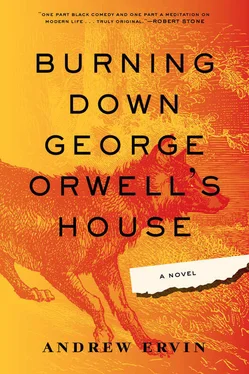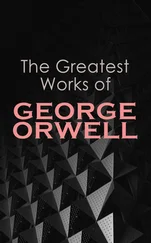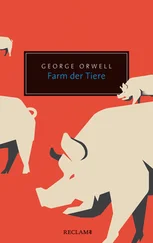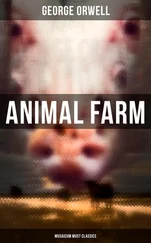“It will work.”
“No offense, but you’re a fucking asshole.”
“Think about it for a sec. People will notice that all these trucks are getting vandalized, right? We’ll make it look like an organized grassroots effort by some smelly activists and it will get covered on every blog in the city. Think of the buzz,” Ray said. He was getting worked up. “Once some imaginary granola-eating pinkos get blamed, buying one of these things will become an act of defiance. Real men are free to waste as much fossil fuel as they want without big government or some hippies telling them what to do.”
“Screw the environment?”
“It’s a matter of synchronizing the doublespeak message with the new media at our disposal. We can even arrange it ahead of time for the dealerships to provide free paint touch-ups if the truck owners want them — which they won’t.”
His two minutes expired.
“SUV Hogg. That’s not it exactly, but let me give it some thought. I’ll run it upstairs. Have you shown this to anybody else?”
“No, I—”
“Don’t. You’re a strange motherfucker, Sugar Ray.”
Four days later, stacks of fresh nondisclosure forms landed on every chair in the building. Bud got the board’s permission to name Ray the assistant account director for what would become the Oil Hogg initiative. It was a huge step up in the world. He even got his very own office. At the end of the day Bud and the rest of the team were waiting for him when he arrived downstairs in the parking garage. His car had disappeared from its usual spot. In its place stood a hulking SUV — a bonus for generating the idea. With some ceremony, the CEO herself handed him the keys, which he used to scrape “Oil Hogg” into the paint.
The team kicked the project off by vandalizing the hood or door or rear panel of twenty-four SUVs and then parking them outside Chicago’s most popular restaurants and tourist spots. Over the days that followed, a small cadre of sworn-to-secrecy interns posted grainy camera phone images on every social-media platform. The reaction came instantaneously. Hundreds of people liked and re-posted the images; they crowed with delight about the comeuppance of those arrogant, petroleum-guzzling bullies who clogged the roads with their behemoth machines.
No one expected the copycat vandalism that followed. Through the winter, the defacement of SUVs took on its own momentum when students, housewives, and everyday proles got in on the action and started scraping up strangers’ vehicles. A wave of low-stakes eco-terrorism washed over Chicago and unwittingly spread the Oil Hogg branding message.
Then Ray’s plan began in earnest. He had the interns launch the counter-initiative. They started on AM radio, calling in to right-wing talk shows to say how proud they were of being decent, law-abiding Americans and hence free to despoil the environment any way they damn well pleased. “Longtime listener, first time caller,” an intern said live on the air from Bud’s office. “I’m proud to be an Oil Hogg.”
Supporters called in to echo his sentiments. The new narrative took shape online and on the airwaves, one extolling the red-meat joy of driving big trucks. The rhetoric of the new blogs and memes equated gasoline usage with being a real American. Hundreds of SUV owners whose vehicles had not been vandalized soon did it themselves. Sales boomed citywide and in the northern half of the state. The auto dealers couldn’t keep them on the lot. The earnings reports erased any doubt on the part of the Logos board about Ray’s unconventional methods.
The fun couldn’t last, however. Someone — most likely an intern — wrote an anonymous, tell-all blog post. Chicago’s free weekly ran a cover story about car dealerships promoting fake grassroots environmentalist vandalism as a way to market more trucks, and that led to a local news segment in which a trench-coated correspondent stood in front of the Logos office and scratched the Greek letters of the company sign with a key.
There were lawsuits and counter-suits, governmental fines and complaints from a union claiming to represent automobile detailers. The Justice Department was snooping around. To avoid litigation from the truck buyers stupid enough to key their own goddamn vehicles, the manufacturer confessed to the shenanigans and offered to pay for all the paint touch-ups.
The Logos Print Team designed full-page mea culpa advertisements for the region’s largest remaining newspapers. The final leg of the campaign featured fat actors portraying stereotypical pinstriped, cigar-chomping auto executives from Detroit getting busted for vandalizing their own trucks. Their buffoonish antics were detailed in an array of short advertorial webisodes, gamified apps, and social-network widgets. Protestors on both sides of the debate loved the images of fat, rich people getting marched off to jail.
One of the interns, a young woman named Flora, repurposed some Oil Hogg print ads for a series of street-art stencils and used them to deface half of the abandoned buildings in downtown Chicago. Her vandalism wasn’t officially approved by Logos, but it wasn’t condemned either. She garnered a great deal of attention around the office and did brilliant work despite her moral objections. In a company-wide email, she had called Ray’s new step in the Oil Hogg initiative “morally reprehensible” and “pure concentrated evil, but ingenious.” Ray saved the email.
By making fun of themselves, the SUV manufacturers turned the scandal into victory and the advertising awards poured in. Local sales records were shattered as consumers rallied around the brand. It was rumored that a Chinese conglomerate wanted to import the SUVs and was petitioning the US government for some revisions to an international trade agreement. In the fiscal quarter that followed, the SUV out-performed hybrids three to one in the greater Chicago market. Dealers presold the trucks months in advance of their production and they continued to get vandalized as fast as they could escape the Michigan assembly lines. More shifts were added at the factories and the creation of so many new jobs led to significant press coverage about the pending renewal of Detroit — and it was all thanks to him.
RAY WAS IN HIS office when the factory down near his hometown exploded. His mother called him. “The plant’s gone,” she said and hung up. He remained at his computer and refreshed a browser window to follow what little news and gossip the downstate TV affiliates and social media users could piece together. The number of reported fatalities climbed all morning. Even before the call from Becky he knew that his father was dead.
The town became a chemical hot zone. Forty-six neighbors and friends were gone as well. Ray stayed in Chicago and managed his mother’s medical care from afar, safe from the toxic smog that would soon express itself in every variety of physiological anomaly. He refused to expose himself to the poisonous cloud that mushroomed over his hometown. A boil-water advisory remained in effect for eight weeks, in a twenty-five-mile radius, while the death toll crept higher. Thousands of acres of crops had to be destroyed. Corn too toxic to be fed even to animals was sold for ethanol, where in the bellies of sedans and SUVs it gained an even greater toxicity; it was exhaust-piped into the atmosphere and dispersed across the entire Midwest.
Helen did everything in her power to console him, but Ray spent his days in a trance of rage and denial. He trudged from the condo to the office, and from the office back to the condo. He didn’t bother going home some evenings and that didn’t sit very well with her, but he felt better when he was safely bunkered down at work. The tedium of spreadsheets and oil price forecasts, the microtrends of American consumer spending habits, distracted Ray from his own inner life. He felt his thought processes growing jumbled and spaghetti-like. Something unfixable had snapped inside him and the awareness of it made it worse.
Читать дальше












